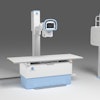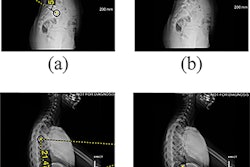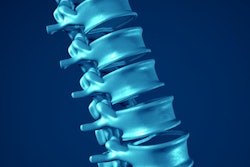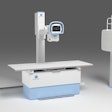
Researchers have developed a new x-ray classification system that can more precisely define which parts of the spine need correction in adult patients with idiopathic scoliosis, according to a study published August 3 in Spine Deformity.
The researchers note that scoliosis affects about 6 million people a year in the U.S. Scoliosis is commonly developed during adolescence, but only a small fraction of cases need surgery. Scoliosis in adults can be a natural progression of adolescent scoliosis, but some adults can also develop the condition, in what's called adult degenerative scoliosis. Adults often experience more pain from scoliosis and may require surgery.
In the new study, researchers describe a method that builds on the Lenke classification system, which defined six types of spinal curvature in adolescent idiopathic scoliosis but is not applicable to adults. The new x-ray system includes the existing curve types and introduces assessments of the global alignment and lumbosacral curve, which more commonly deteriorate in older patients.
In the study, 12 spine surgeons used the new classification system to grade 30 cases twice, which resulted in near-perfect agreement in the assessments of the patients, according to the findings.
The system could provide a more universal assessment tool, enhancing treatment, communication, and analysis of spinal deformities that affect older patients, according to the authors. It could also improve treatment options because it defines different areas of the spine that may need to be corrected and fused.
The researchers noted that, currently, no x-ray classification system for scoliosis is widely accepted.




















